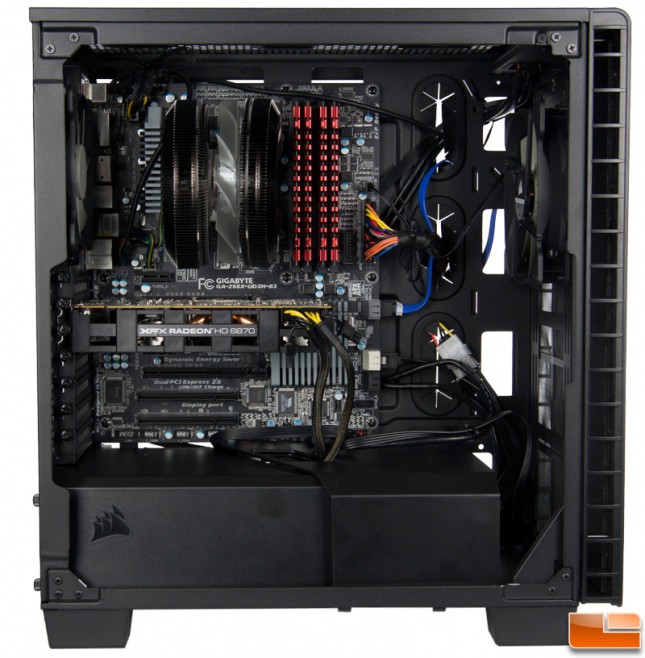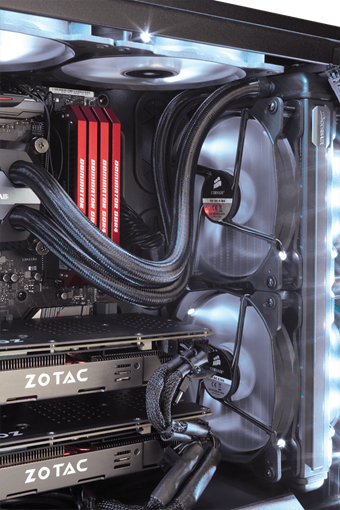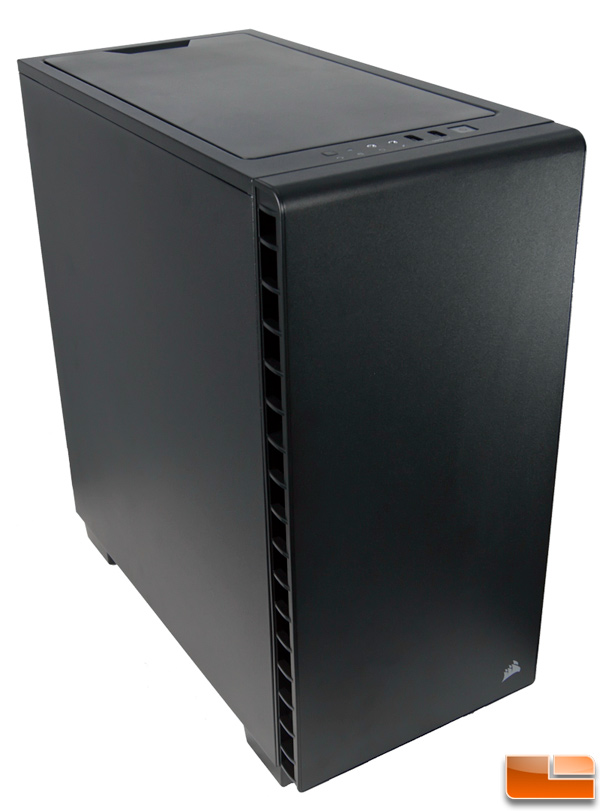Corsair Carbide 400Q Silent Mid-Tower Case Review
Final Thoughts And Conclusions
While not the perfect case (few are), we were pleased overall with the Corsair Carbide 400C case as the list of bravos exceeded the boos by a fair margin. Starting with the positives, we have a great looking case both inside and out with smooth edges and a sturdy steel build. For the 400Q variation, the sound-proofing is generously applied and does a fine job keep noise to a near silent state. Tool-free assembly, ample air flow, adjustable fan size/positioning, dust filters, and thoughtful cable routing cut outs complete with rubber grommets are the most notable features that really make the case stand out.
The lack of 5.25″ bays can be either a plus or minus depending on your needs. This trend is certainly the direction case designs are moving toward as optical drives become less of a necessity and fall out of favor. That said, this is a case focused on noise reduction yet lacks a fan controller and eliminates one of the most common places to implement one. It’s the very absence of these bays that give the case what is probably its greatest asset for a mid-tower case – the added interior space and mounting options for most any liquid cooling assembly. I really liked the ability to adjust fan positioning to suit the build and facilitate custom air flows.

My complaints are few, somewhat quirky, and partially preferential. Getting at the front filter requires removing the fascia which can be risky since it does not remove easily. Luckily, this isn’t something that has to be done frequently. While cable routing is facilitated with the various cutouts, any cables run around the backside of the motherboard tray have to strategically navigate the 2.5″ drive caddies. Only the thinnest of cables can overlay the caddy and still allow the side panel to fit on and close properly which rules out about 98% of cables. The caddy itself is one large piece which doesn’t help and invoked a yearning for the individually removable trays we found in the 600C/Q. The SATA cables for this must be the straight-end variety and SATA power cables found on most power supplies are going to be difficult, if not impossible to use on drives in this area. It may just be easier to slap a 2.5″ to 3.5″ adapter on the drive, pop it into the interior drive cage and call it a day. My biggest gripe is with the shroud at the bottom of the case. The intent is to isolate the PSU and 3.5″ drive cage to mitigate noise, heat, and provide a cleaner look – though the latter is really only a benefit on the 400C windowed case. In practical use, it’s more of a pain than anything. It requires accurate planning of PSU cable needs and since the cables have to be routed through two pieces, makes it more cumbersome than it really needs to be. Any future reworking of components due to upgrades or add-ons is going to have this additional obstacle which is likely to elicit a few expletives in the process. In truth, I’d be inclined to leave these pieces out of the build altogether which is a perfectly sane option, making this less of a detractor from an overall fine case. While on the subject of changes, I believe I would add an additional intake fan at the bottom front to maximize cooling across the 3.5″ drives through to the PSU, even at the expense of potential additional noise.
As a case that promotes silence as a feature, it mostly lives up to its billing. Anytime you have one or more active fans in a case, it’s near impossible to make it truly silent but with the sound-proofing measures employed here, it’s extremely quiet – especially when it comes to noise generated from the CPU and GPU coolers. If stowed under a desk, you will not be able to hear it running but set it close proximity on top of the desk and you get negligible fan noise. Frankly, if this level of noise is bothersome, you may have bigger issues. Pair this with the superb build quality and all of the other features we’ve discussed, the MSRP of $99 puts it in a good pricing slot for a mid-tower case given the fact that most generally range from $50-$100 with great deal of them lacking the features and quality of this case. The criticisms we had are largely design quirks that can be overcome without too much effort and not things that would dissuade most consumers from picking one up. For those who are wary of the few niggles discussed and are able to spend a bit more coin, the 600C/Q models largely address these issues while offering extra space and features, though it does have a considerable larger footprint. In the end, we would definitely recommend the Corsair Carbide 400Q/C for those needing a feature rich, quality made mid-tower case.
Legit Bottom Line: If 5.25″ drive bays aren’t in your list of requirements for a mid-tower build but you still want premium features such as dust filters, sound proofing, and tool-free assembly, Corsair has just what you are looking for with the Carbide 400Q.



